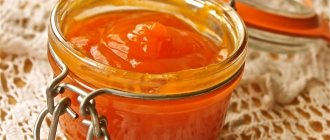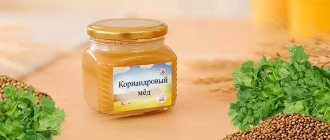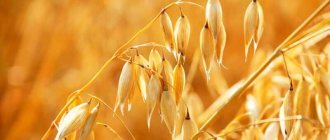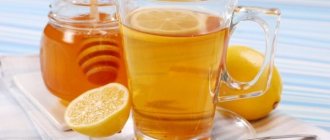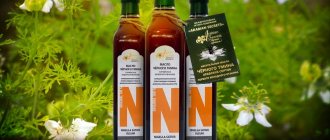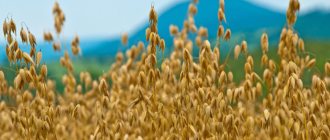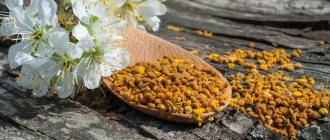Neither adults nor children can refuse fragrant honey. This amazing taste, familiar from childhood, has won the hearts of most of the inhabitants of our planet. Honey is a component of hundreds of different dishes, as well as a unique medicine, the healing power of which has been used since ancient times.
Even small children know that honey is made by bees, but they are unlikely to realize that in addition to honey, there are other beekeeping products, and their benefits are also invaluable. Honey, honey bee, dead bees, beebread, royal jelly, propolis, wax, drone brood - they all have unique properties.
More than 1000 years ago, people discovered bee products, and their benefits turned out to be simply incredible. They had a full range of useful substances and microelements necessary to ensure the normal functioning of the body. But they still remain a mystery to humanity, because the mechanism of their action has not been fully revealed; in addition, people are gradually discovering their new amazing properties.
The wide popularity of beekeeping products and their benefits, which have been proven more than once in practice, are due to their unique properties.
Main properties of beekeeping products:
- naturalness;
- excellent absorption by the body;
- greater usefulness of the components included in their composition;
- high nutritional value;
- absolute harmlessness.
In addition, they are able to influence the human body at the genetic level, restoring broken connections and interactions. They perfectly restore the performance of both individual organs and the body as a whole.
Main bee products and their properties
Bee products and their benefits
| Types of products | Basic properties |
| Honey |
|
| Honey bar |
|
| Perga or "bee bread" |
|
| Podmor |
|
| Royal jelly |
|
| Propolis |
|
| Pollen |
|
| Wax |
|
| Bee venom |
|
All beekeeping products are unique. Honey is the most famous and “delicious” beekeeping product, as well as an indispensable source of nutrition for the body’s cells. Thanks to its amazing mineral and vitamin composition, pollen is a source of youth. Bee venom is a source of longevity, royal jelly is a source of energy, and wax is a source of beauty. Bee bread is able to restore the body's strength.
Of all beekeeping products, bee venom treatment is the most widely used. It is quite deservedly considered the “property” of traditional medicine. He is often called a “natural healer.”
The benefits and harms of bee venom
We recommend reading our other articles
- Pumpkin jam recipes
- Pushkin breed of chickens
- Begonia flower
- The best varieties of lettuce
Bee venom has many beneficial qualities.
- Activates the immune system, increases the body's resistance to negative external influences.
- Relieves pain. This is a very useful remedy for joints and muscles if there is severe pain in them. The components of the poison improve blood circulation. This remedy is used for arthritis, rheumatism, arthrosis, radiculitis, inflammation, varicose veins and similar problems.
- Bee venom balm removes inflammation, pus, and kills bacteria.
- Increases the number of red blood cells, dilates blood vessels and reduces the amount of cholesterol in the body. It is often used for heart conditions, including hypertension.
- Used for multiple sclerosis. Bee venom inhibits the destruction of nerve cells and forms new endings, so that the disease can be eliminated in the early stages.
- Bee venom has a positive effect on the functioning of the liver, stomach, and intestines.
- Effective for disorders of the central nervous system, insomnia.
- Cream or balm helps treat psoriasis, wounds, and acne on the body.
Interesting!
Treatment with bee venom is called apitherapy.
A wide variety of medicines and ointments for external or internal use are made from bee venom.
Among the most obvious harmful properties of bee venom are:
- destruction of red blood cells;
- blood thinning;
- disorders of mineral metabolism;
- leaching of mineral salts;
- increased glucose levels;
- the appearance of edema;
- heart rhythm disturbances,
- the appearance of protein in the urine.
Important!
Bee bites on the neck and tonsils are considered especially dangerous!
What are the main properties of bee venom?
Bee venom is a powerful biological stimulant. It has a number of basic properties that ensure its popularity as a medicine:
- normalizes heart rhythm;
- has a vasodilating effect;
- increases the permeability of the vascular wall;
- has a pronounced antibacterial effect;
- blocks the source of inflammation;
- has a direct effect on pain centers and blocks them;
- can be used as a disinfectant;
- has well-defined radiation-protective properties;
- it is a kind of building material that is capable of restoring the destroyed sheath of nerve fibers, helping to restore normal transmission of nerve impulses in organs and tissues;
- actively restores muscle tone.
Such a wide variety of properties of bee venom is, of course, determined by its unique composition.
What is included in the poison?
Bee venom is based on a complex protein complex, which conventionally consists of three protein fractions:
- Zero fraction (F-0) - includes non-toxic proteins that serve as the basis of the poison.
- The first fraction (F-1) is represented by melittin, which is the active principle of bee venom. It is very toxic and contains 13 amino acids.
- The second fraction (F-2) is a source of phospholipase A and hyaluronidase. They underlie the mechanism of action of the poison and determine the body’s reaction to its influence.
Considering the chemical composition of bee venom, we can distinguish its main components:
- Hyaluronidase is an enzyme that breaks down blood and tissue structures and smoothes scar formations. Causes a severe allergic reaction.
- Phospholipase A is a powerful antigen and allergen for the human body. It disrupts the processes of tissue respiration and converts phospholipids into toxic substances.
- Phospholipase B, or lipophospholipase, converts toxic compounds into non-toxic ones, restores lysolecithin, and reduces the activity of phospholipase A.
- Acid phosphatase is a protein with a complex structure that does not exhibit toxic effects.
- Amino acids – bee venom contains 18 out of 20 amino acids.
- Inorganic acids – hydrochloric, orthophoric, formic acid.
- Histamine and acetylcholine help increase vascular permeability and expand their diameter.
- Microelements – phosphorus, copper, calcium, magnesium.
Effect on the human body
What are the secret properties of bee venom that the pharmacy pays fairly good financial contributions for its collection? Actions that remove inflammatory processes and relieve pain symptoms. Comparing venom with other types of animal venom, bee venom is considered one of the strongest antibiotics. It fights well against such pathogenic bacteria: varieties of E. coli, staphylococci and streptococci, diphtheria and, in some cases, tuberculosis.
It is an excellent immunomodulator and strengthens the entire immune system of the body. Actively fights any viral infections in the human body. We can even safely say that today no medicine can replace it. Helps restore the body's protective properties inherent in genetics. Activates all organs for self-healing processes.
In addition to all the listed advantages, it has good temperature resistance: at the same time. 100 Celsius, does not lose its healing qualities for 10 days. Antibacterial properties do not disappear even after 10 minutes. How does poison withstand cold is beyond comprehension? When completely frozen, the properties and structure of the venom cells remain intact. The same can be said about moisture loss.
Even when the poison dries completely, its remains are still 100% useful, since the substances are not destroyed when dried. Features in the composition of the elements Scientists are still scratching their heads about its unique effects on the body. Bee venom contains a lot of enzyme particles, amino acids, polypeptides, and enzymes. The main peptides include melittin, which is important as an antiseptic.
It also serves as a radioprotector, which enhances functional stimulation of the bone marrow. Its composition is even better than hirudin, which is secreted by leeches, in its ability to: improve blood clotting and destroy blood clots. Apamine alkali contains 18 amino acids, which reduce anti-inflammatory effects. There are many more elements that poison contains, which contribute to the regeneration and restoration of the entire body, and therefore slow down aging. MSD peptide, comparable to the actions of melittin, actively controls the restoration of the brain system. The venom contains 18 of the 20 essential amino acids. The main ones are: leucine, trionine, histidine, lysine, alanine, serine, phenylalanine, etc.
It is also important to mention acetylcholine and histamines, which increase the permeability and permeability of blood vessels, and are excellent for paralysis. Bee poisonous substance has many microelements and macroelements, i.e. it contains almost the entire periodic table. Much stronger, 30 times, from the enzymatic action of snake venom. Similar elements in composition to this substance have not yet been found.
Positive effect on the human body
Only a small part of the miraculous effects of bee venom on the body have been described. The action segment isn't just surprising, it's amazing. The impact on the human body is colossal:
- antibacterial,
- painkiller,
- improvement of metabolism,
- improvement of reproductive organs,
- active fight against various types of tumors,
- neuralgic diseases and inflammation of the trigeminal nerve,
- spine treatment,
- treatment of the prostate gland,
- varicose veins,
- trophic ulcer of the extremities.
Damage caused by bee venom
Treatment with poison is similar without surgery. Having studied all the miraculous properties of the treatment, you need to take into account that such a protective substance in bees can also cause harm to the body. The venom of one honey bee has almost no negative impact, however, there can be negative manifestations: severe poisoning from bee venom, allergies. Intoxication from poison can occur from a large number of bites. But for this to happen, a huge number of people (about 50) must be bitten at the same time.
Allergy to bee venom or individual intolerance occurs in 2-0.5% of people. These are quite strong allergic symptoms of attacks that can be fatal. One bee sting is enough to trigger an allergy. In such cases, you must immediately consult a doctor, do not decide to help the victim yourself, because this moment requires a quick response from a professional specialist.
Mechanism of action of bee venom
Phospholipase A acts on lecithin, breaks it down and becomes part of the cell membranes. In this case, many cells are partially destroyed, and some even undergo complete disintegration. The effect of phospholipase A is also directed at red blood cells, which causes their complete hemolysis. At this point, hyaluronidase increases vascular permeability, accelerating the rate of absorption of bee venom and enhancing its toxic effect.
Methods for obtaining bee venom
In central Russia, bee venom collection begins in the second half of May and ends in early July. It can also be collected after the end of the honey harvest in late July and early August. Poison can be collected no more than once every twelve days. On average, from one bee you can get from 0.4 to 0.8 mg of poison.
There are several ways to obtain bee venom:
- Using a poison receiver: - using a plexiglass container, this method provides the opportunity to obtain poison in its pure form; - using a jar of distilled water, the resulting poison is characterized by high purity.
- Euthanasia of insects with ether.
- Electrical stimulation or "milking the bees".
- Mechanical removal of a bee sting.
How is bee venom formed?
Bee venom is a colorless liquid with an odor reminiscent of honey. It is a biologically active substance, so it dries instantly in the open air. In large quantities it is an extremely harmful and even dangerous substance for humans (the sting of 450 bees is considered fatal, 180 or more causes severe poisoning). In small doses, bee venom is used in cosmetology and medicine.
The venom is produced in the sting gland of bees. Both worker bees and queen bees have such glands - they secrete exactly the same poison. Each bee's sting contains from 0.2 to 0.8 milligrams of poison, which the insect injects when biting. For worker bees, poison serves as a means of defense for the hive and colony. The queen uses her sting solely to eliminate her rival.
A bee is unable to sting if its abdomen is filled with honey, and most often dies when stung because it cannot remove the sting.
A bee's sting is designed in such a way that once it has pierced the skin, it cannot pull it back out. Contrary to popular belief, not all bees die after being stung. If the insect carefully flies away from the victim, it will remain without a sting, but will survive. Death occurs not from the loss of the sting, but from damage to internal organs when it is removed from the bee’s body, when the insect is in a hurry to move away from the victim.
The effect of bee venom on the body can be compared to a powerful antibiotic. It is capable of destroying a wide variety of microorganisms, and even in a diluted state is sterile.
Figure 2. Production of poison in the body of insects
The substance is formed in the filamentous glands of bees. Its amount gradually accumulates with age and reaches a maximum at two weeks of age (Figure 2). Despite the common constituent substances, the composition of the venom may vary depending on the breed of bees, their age, diet and habitat.
Treatment with bee stings
Since ancient times it has been known that bee stings have a beneficial effect on the human body. Hippocrates also used bee stings to treat various diseases.
Apitherapy was first used back in 1930. Today it is successfully used to treat diseases of the peripheral nervous system - radiculitis, neuralgia, neuritis, rheumatism and joint diseases of various etiologies.
Recently, acupuncture apitherapy has gained great popularity. In this case, bee venom is introduced into certain biological points. The effect of poison on acupuncture points is due to the accumulation of main nerve receptors and “mast cells” in them, which have a direct connection with the central organs. This effect activates the production of many enzymes - histamine, heparin, serotonin.
Acupuncture apitherapy is widely used for rheumatism, polyarthritis, diseases of the peripheral nervous system, vascular and hypertension diseases, trophic ulcers, inflammatory processes, and migraines.
When conducting apitherapy, it is important to comply with a number of generally accepted requirements:
- Gradual increase in the dose of injected poison. If a patient has an allergic reaction to 5-6 bee stings, treatment should begin with 2-3 bees. In this case, it is necessary to gradually increase the time the sting is in the body, which will ensure gradual adaptation to the allergen.
- Following a strict diet. During treatment, a dairy-vegetable diet is necessary. The consumption of alcoholic beverages, spices and foods high in fat is strictly prohibited.
- Treatment with bee venom immediately after eating is not allowed.
- After treatment procedures, it is forbidden to take a bath, sunbathe or engage in physical exercise.
- The rest time after a treatment session should be at least 1 hour.
- During the treatment process, it is necessary to take a day off once a week.
- To increase the effectiveness of treatment, it is recommended to take other bee products orally.
There are generally accepted treatment regimens for apitherapy, and each individual disease has its own individual regimen. For hypertension, acupuncture points are located on the outer surfaces of the upper and lower extremities, the use of no more than 4 bees is allowed, treatment is carried out at intervals of 2 times a week. For superficial sacral radiculitis, bees are placed on the lumbar and sacral area in the amount of 8-12 pieces. For eye diseases, the effect is applied to acupuncture points located in the temple area, and the use of 2-4 bees is allowed. To strengthen the immune system, bees are placed on the outer surface of the thighs every 4-5 days. The average time the poison affects the body is 5-10 minutes, depending on the type of disease.
Treatment with bee stings should only be carried out under the supervision of a doctor. This will help avoid the negative effects of bee venom and reduce the risk of an allergic reaction. Bee venom is a powerful allergen; in some cases it can even cause anaphylactic shock. Only a doctor will be able to calculate the dose and time of exposure to the poison, because each person is individual, which requires a special approach in each specific case. In addition, before apitherapy, a test for an allergic reaction to bee venom should be performed.
Bee poison treatment
Treatment with bee venom is called apitherapy. The techniques are used for diseases of the joints and blood vessels, which are affected by the poison. Initially, the treatment method was common in folk medicine. In the middle of the 20th century, scientists also paid attention to it. Currently, bee venom is also used in official medical practice. Many medicines include bee venom or its components.
The role of bees in pollination and nectar collection of different plant species
Doctors believe that bee venom is a unique immunostimulant, which has a particularly beneficial effect on joints.
For what diseases is poison used?
The unique substance has a diverse effect on the body in several directions at once, the main ones being the cardiovascular and nervous system. Therefore, bee venom treatment is used for diseases such as:
- multiple sclerosis;
- hypertension;
- joint pain;
- skin diseases.
The venom significantly increases blood circulation, stimulating blood drainage. At the same time, it has an anti-inflammatory effect. For different diseases, treatment is prescribed in different ways.
For multiple sclerosis
Multiple sclerosis is a dangerous autoimmune disease in which the body's defense systems react aggressively to the nerve sheaths. The gradual death of nerve cells and tissues leads to the progression of the disease and serious nervous disorders.
Traditional medicine cannot yet completely cure this disease, limiting itself to symptomatic therapy. But bee venom is considered an effective means of combating the disease.
The substances included in its composition stop the destruction of nerve cells, and amino acids provoke the formation of new endings. Thus, the use of poison can not only stop the development of the disease, but also completely eliminate it in the initial stages.
Treatment of hypertension
Venom obtained from bees is considered an effective means of combating hypertension. This substance perfectly dilates blood vessels, reduces blood viscosity and prevents thickening of vessel walls.
Note: The folk remedy is considered especially effective in the initial stages of pathology. But even in advanced cases, the use of poison helps reduce the risk of heart attack and stroke.
The most effective method is considered to be acupuncture - subcutaneous injection of poison into certain points on the body. However, in ancient times they used a simpler method - 4 bees were planted on the patient’s collar twice a week. Bee stings provoked the injection of poison into the body and had the desired therapeutic effect.
When treating live bee stings, it is important to strictly follow the technology and avoid too strong and frequent stings. Otherwise, the effect will be reversed and the patient may suffer from allergies.
For joints
As a component of ointments and balms, the poison can relieve joint pain (Figure 4). The components included in the substance prevent blood stagnation in the extremities and serve as an effective means of preventing varicose veins. In addition, applying poison mixed with herbal ingredients to painful areas perfectly relieves inflammation.
Figure 4. Using poison to relieve joint pain
Also, the poison itself and products based on it are used to treat radiculitis, relieve severe pain after intense physical activity and as an aid to combat rheumatism.
For skin diseases
Like other bee products, insect venom is also used as an external agent. Mixed with vegetable oils and decoctions, it helps fight psoriasis, relieves peeling and accelerates the healing of wounds and ulcers on the body.
It is worth considering that such poison is a powerful allergen, and it should not be used by people intolerant to bee products, even as an external remedy.
Use of bee venom in medicine
The poison is successfully used to treat a huge range of diseases, such as endarteritis, atherosclerosis of peripheral vessels, chronic infections, trophic ulcers, thrombophlebitis, furunculosis, dermatitis, psoriasis, hypertension, diseases of the sciatic, femoral and other nerves, rheumatism and rheumatoid arthritis, allergic diseases – hay fever and urticaria, eye diseases.
Bee venom, whose benefits for human health are simply unique, is the basis of many medicines. The drugs “Apifor”, “Apicosan”, “Apicur”, “Apizatron”, “Apigen”, “Forapin”, “Virapin” - this is not the entire range of drugs that have become widely known in medicine.
In our country, ointment based on bee venom is very popular. Gels and creams, where poison acts as an active ingredient, have also proven themselves well.
Sophia with bee venom is a cream used for swelling and inflammation of the joints. It normalizes metabolic processes in joints and increases nutrition of damaged tissues. After its use, joint mobility is restored and the range of movements performed by them increases. The cream must be applied directly to the site of inflammation.
The gel-balm “Bee Venom” 911 has also proven itself to be excellent. It can be used for osteochondrosis, radiculitis, arthrosis, arthritis and gout.
It has amazing properties that allow you to reduce the pain reaction in a short time, and then completely eliminate the source of inflammation. Main properties of the gel:
- quickly reduces pain and relieves swelling of joints;
- stimulates restoration processes in cartilage tissue and increases the production of synovial fluid;
- has a noticeable anti-inflammatory effect;
- has bactericidal properties;
- exhibits antirheumatic properties;
- normalizes metabolic processes in joints;
- restores joint mobility.
Also very popular is the product “Bee Venom” - an ointment (the instructions require careful compliance with all conditions of use in order to exclude the possibility of developing a negative allergic reaction), which actively fights osteochondrosis, osteoarthritis, rheumatism, arthritis, radiculitis, myositis and neuralgia. It has a pronounced anti-inflammatory and analgesic effect. It relieves swelling well and speeds up the healing process. It has a warming effect on the damaged joint and helps normalize metabolic processes in it.
It is worth noting that, regardless of the form of release, bee venom, the price of which varies between 70-150 rubles and is available to all citizens of our country, perfectly exhibits all its beneficial properties and has a beneficial effect on the body.
Negative effects of bee venom
Do not forget that the properties of bee venom are not limited to just beneficial effects on the body. It also has pronounced hemorrhagic and hemolytic properties. In addition, it has neurotoxic and histamine-like effects.
With single stings, the body most often reacts with a local inflammatory reaction, which resolves within 24-48 hours. With multiple stings, severe toxic intoxication occurs, which can be fatal.
First aid for bee venom intoxication
When stung, it is important to quickly remove the bee's sting; to do this, use tweezers. The wound must be treated with a solution of ammonia or calendula tincture. After this, you need to apply a calendula-based ointment to the wound. Additionally, you can apply a tourniquet above the sting site for 30-40 minutes and apply cold to the affected area. In case of high degree of intoxication, you should immediately consult a doctor.
Beekeeping products, including bee venom, are a unique creation of nature, which has become a real discovery for humanity. Their enormous benefits and amazing properties have ensured enormous popularity not only as a source of nutrients, vitamins and minerals, but also as medicines that have gained universal appreciation and fame among the inhabitants of our planet.
How to obtain bee venom
It takes a large number of bees to collect enough bee venom. The resource is collected in the apiary. There are 3 ways to obtain the substance:
- manually using tweezers;
- using peach oil;
- using a poison receiver.
Selecting venom manually requires a lot of time, skill and experience. When performing all actions with tweezers, insects must be caught one at a time and gently pressed so that the bee splashes out the poison, but not the sting. When using oil, several bees are dropped into the jar. The method is much simpler and faster, but most insects die.
The use of an electric grid, called a poison receiver, has made life much easier for beekeepers. The device sends an electrical impulse and causes the bees to release venom without damaging the stinger. In this way, the required amount of pure poison is obtained without serious harm to the hive. A net with a poison receiver is placed opposite the hive window. After that it is turned on.
It is important to remember that injecting the poison irritates the bees in itself, so approaching the hive after collecting the poison without special equipment is dangerous.
Mechanical collection method
It can be assembled using two methods - electrical and mechanical. However, if you decide to collect using a mechanical method, you must be prepared for the fact that the bees in the hives may begin to die. The fact is that with this technique you need to carefully take the bee with tweezers (as a result of which the sting will stretch out and the poison will begin to splash out) and apply the sting to the glass, on which you will collect the poison. After this, the bee is released. Thus, you can collect the venom of hundreds of bees on one glass.
With this collection option, you should remember that you can’t store it on glass for very long. Otherwise, it will lose its medicinal qualities.
There is a second option for mechanical collection. In fact, for this you just need to force the bees to sting the cellophane layer between the bee and the animal (for example, a pig, since it has thick skin and the animal will not feel pain). But both of these methods have a number of significant drawbacks.
Northern bees - habitats and distinctive qualities of the breed
Disadvantages of mechanical collection
Most often, as a result of these manipulations, the bee’s poison gland opens and the insect dies.
- The extraction process itself is very labor-intensive, and its efficiency is low.
- Service personnel are subject to a large number of bites.
Electrical method
When using the electric method of extracting bee venom, a special device is used, which is based on two main principles for obtaining the substance - bees secrete poison under the influence of a current discharge striking them and, most importantly, insects do not lose their sting, which is why they remain alive, producing something so necessary for humans medicine.
Due to the fact that bees survive, and service personnel practically do not suffer from insect bites, the second option for obtaining bee venom is more developed.
